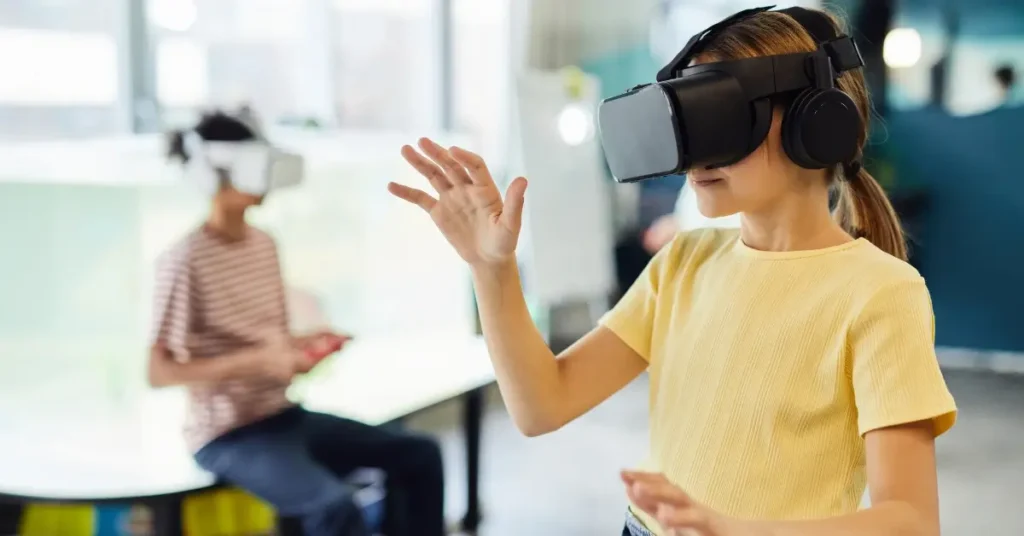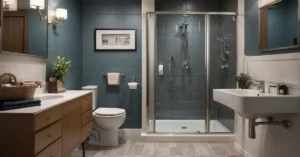I’ve always been fascinated by the potential of technology to enhance the learning experience. One area that has seen tremendous growth in recent years is the smart class room. Smart class rooms are designed to integrate technology into the learning environment, providing students with a more interactive and engaging experience. In this article, I’ll explore the components of a smart classroom, the benefits they offer, and some of the challenges associated with implementing them.
One of the primary drivers behind the development of smart classrooms is the need to keep pace with the changing demands of the modern workforce. As technology continues to evolve, employers are increasingly seeking workers with strong digital skills. Smart classrooms provide students with the opportunity to develop these skills in a supportive and engaging environment. By integrating technology into the learning experience, students are better prepared for the demands of the modern workplace.
So, what exactly is a smart classroom? At its most basic level, a smart classroom is a learning environment that is equipped with technology designed to enhance the learning experience. This can include everything from interactive whiteboards and projectors to tablets and laptops. By providing students with access to these tools, educators are able to create a more dynamic and engaging learning experience.
Key Takeaways
- Smart clas srooms integrate technology into the learning environment to enhance the learning experience.
- Smart class rooms are designed to help students develop the digital skills needed in the modern workforce.
- Smart class rooms are equipped with a variety of tools, including interactive whiteboards, projectors, and laptops, to create a more engaging learning experience.
The Need for Smart Class room

The traditional classroom setting is no longer enough to meet the demands of today’s students. This is where smart classrooms come in.
Smart classrooms are equipped with the latest technology to enhance the learning experience. They provide a collaborative and interactive environment that encourages students to participate and engage with the material. With the help of technology, teachers can create a more personalized learning experience that caters to each student’s needs.
One of the main benefits of smart classrooms is that they allow for more efficient and effective teaching. Teachers can use multimedia tools to explain complex concepts, making it easier for students to understand. They can also use online resources to supplement their lessons, providing students with additional information and practice exercises.
Smart classrooms also provide students with the opportunity to develop important skills such as critical thinking, problem-solving, and collaboration. By working together on projects and using technology to solve problems, students learn how to work in teams and develop their creativity.
In today’s fast-paced world, it’s important for students to be able to adapt to new technologies and ways of learning. Smart classrooms provide them with the tools they need to succeed in the future. As an educator, I believe that investing in smart classrooms is essential to providing students with a high-quality education that prepares them for the challenges of tomorrow.
Components of a Smart Classroom

A smart classroom is a learning environment that is equipped with technology to enhance the teaching and learning process. In this section, I will discuss the components of a smart classroom.
Interactive Whiteboards
Interactive whiteboards are a crucial component of a smart classroom. These boards allow teachers to present information in a more engaging and interactive way. They can display multimedia content, such as videos and images, and allow teachers to annotate over them. Interactive whiteboards also enable students to collaborate and interact with the content.
Student Response Systems
Student response systems, also known as clickers, are another essential component of a smart classroom. These devices allow teachers to assess student understanding in real-time. Students can answer questions and provide feedback using their clickers, and the results are displayed on the interactive whiteboard. This technology promotes active learning and encourages student participation.
Audio Visual Equipment
Audio visual equipment, such as projectors and speakers, are necessary components of a smart classroom. These devices enable teachers to display and play multimedia content, such as videos and audio recordings. They also enhance the classroom experience by providing clear and audible sound.
Digital Content
Digital content, such as e-books and online resources, are becoming increasingly popular in smart classrooms. These resources provide students with access to a vast array of information and allow teachers to customize their lessons based on individual student needs. Digital content also promotes self-directed learning and encourages students to take ownership of their education.
Benefits of Smart Classrooms
Smart classrooms, in particular, have revolutionized the way students learn and interact with course material. Here are just a few of the benefits of smart classrooms:
Enhanced Learning Experience
Smart classrooms provide a more interactive and engaging learning experience for students. With access to multimedia resources, such as videos, animations, and simulations, students are able to visualize complex concepts and engage with course material in a more meaningful way. Additionally, smart classrooms often offer personalized learning experiences, allowing students to progress at their own pace and receive targeted feedback on their performance.
Improved Student Engagement
Smart classrooms also promote greater student engagement and participation. Interactive whiteboards, for example, allow students to collaborate and contribute to class discussions in real-time. This not only helps students develop critical thinking and problem-solving skills, but also fosters a sense of community and teamwork in the classroom.
Better Accessibility
Finally, smart classrooms provide greater accessibility for students with disabilities. Assistive technologies, such as text-to-speech software and screen readers, help students with visual or auditory impairments access course material more easily. Additionally, smart classrooms often provide closed captioning and other accommodations to ensure that all students can fully participate in the learning experience.
Challenges in Implementing Smart Classrooms
In this section, I will explore some of the common challenges that schools and educators face when implementing smart classrooms.
Technical Issues
One of the biggest challenges in implementing smart classrooms is technical issues. These issues can range from connectivity problems to software glitches. It’s important to have a dedicated IT team that can troubleshoot and fix technical issues quickly. In addition, regular maintenance and updates are necessary to ensure that the technology is functioning properly.
Training Requirements
Another challenge is the training required for teachers and students to use the technology effectively. Teachers need to be trained on how to use the technology and incorporate it into their lesson plans. Students also need to be taught how to use the technology and be given time to practice. Providing ongoing training and support is crucial to the success of smart classrooms.
Cost Factors
Cost is another challenge in implementing smart classrooms. The initial investment in technology can be expensive, and ongoing maintenance and updates can also add to the cost. It’s important to weigh the benefits of smart classrooms against the cost and determine if it’s a worthwhile investment for the school.
Case Studies of Successful Smart Classroom Implementations
The first case study is from a high school in California. The school implemented a smart classroom system that includes interactive whiteboards, projectors, and tablets for each student. The teacher can easily share content with the students, and the students can collaborate on projects in real-time. The result? The students have shown a significant improvement in their grades and engagement in class.
Another successful implementation is from a university in Texas. The university implemented a smart classroom system that includes a lecture capture system, video conferencing, and interactive displays. The lecture capture system allows students to review lectures at their own pace, and the video conferencing allows for remote learning. The result? The university has seen an increase in student satisfaction and retention rates.
Lastly, a primary school in the UK implemented a smart classroom system that includes a gamification platform. The platform encourages students to learn by making the learning process fun and engaging. The result? The school has seen an increase in student participation and enthusiasm for learning.
Future Trends in Smart Classrooms

As technology continues to evolve, so too do the possibilities for smart classrooms. Here are some of the future trends that we can expect to see in the years to come:
- Virtual Reality (VR): VR technology is already being used in some classrooms to provide students with immersive learning experiences. In the future, we can expect to see even more widespread use of VR in smart classrooms.
- Artificial Intelligence (AI): AI has the potential to revolutionize education by providing personalized learning experiences that are tailored to the needs of individual students. In the future, we can expect to see more AI-powered tools and platforms in smart classrooms.
- Internet of Things (IoT): IoT technology can be used to create smart classrooms that are more efficient and effective. For example, sensors can be used to monitor temperature, lighting, and air quality, while smart whiteboards can be used to enhance collaboration and engagement.
- Gamification: Gamification is already being used in some classrooms to make learning more fun and engaging. In the future, we can expect to see even more gamification in smart classrooms, with the use of games, quizzes, and other interactive tools.
- Augmented Reality (AR): AR technology can be used to create interactive learning experiences that bring lessons to life. In the future, we can expect to see more AR-powered tools and platforms in smart classrooms.
Overall, the future of smart classrooms looks bright, with new technologies and tools emerging all the time. By embracing these trends, we can create learning environments that are more engaging, effective, and enjoyable for students.
FAQ
What is the concept of smart class room?
The concept of a smart classroom is to enhance the learning experience through the use of technology, such as interactive whiteboards, tablets, projectors, and other multimedia tools. Smart classrooms can provide a more engaging and interactive learning environment for students, and can also improve communication and collaboration between teachers and students.
What should be in a smart classroom?
A smart classroom should have interactive whiteboards, projectors, tablets, digital textbooks, multimedia tools, and other educational technology that can enhance the learning experience. It should also have reliable and fast internet connectivity, and a comfortable and ergonomic learning environment.
What are the benefits of smart classrooms?
Smart classrooms offer benefits such as increased student engagement, improved collaboration and communication, personalized learning, and enhanced critical thinking skills. They can also provide access to a wide range of resources and enable teachers to track student progress more effectively.
If you liked this blog article about the topic: Smart Class room, don’t forget to leave us a comment down below to tell us about your experience.
Feel free to also check out our Articles from the category “All about Smarthome“.



